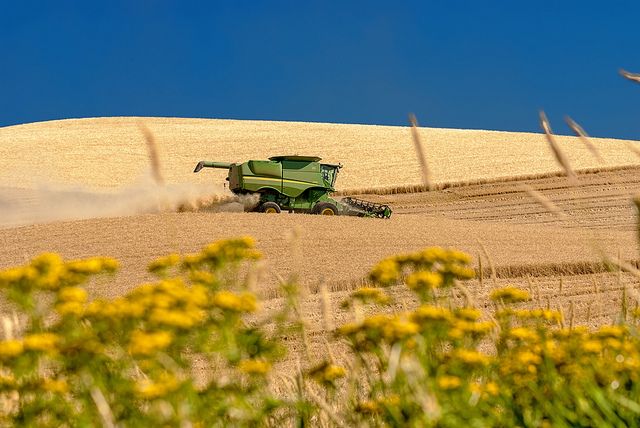
Title
By Stephen Russell - May 24, 2014
This article was originally posted on the WRI blog, Insights.
The Greenhouse Gas Protocol launched a new guidance this week to help agricultural companies measure and manage their greenhouse gas (GHG) emissions from crop and livestock production. It is the first such international guidance for the sector, and will help underpin efforts to mitigate agriculture’s environmental impact.
But what exactly are agricultural emissions, and why is it important to manage them? Drawing on the latest research and data, here is everything you need to know about agriculture’s climate footprint.
1) What share of global greenhouse gas emissions comes from agriculture?
Farms emitted 6 billion tonnes of GHGs in 2011, or about 13 percent of total global emissions. That makes the agricultural sector the world’s second-largest emitter, after the energy sector (which includes emissions from power generation and transport).
2) Where do a farm’s emissions come from?
Most farm-related emissions come in the form of methane (CH4) and nitrous oxide (N2O). Cattle belching (CH4) and the addition of natural or synthetic fertilizers and wastes to soils (N2O) represent the largest sources, making up 65 percent of agricultural emissions globally. Smaller sources include manure management, rice cultivation, field burning of crop residues, and fuel use on farms. At the farm level, the relative size of different sources will vary widely depending on the type of products grown, farming practices employed, and natural factors such as weather, topography, and hydrology.

Farming emissions come from a variety of sources that differ depending on the type of farm. Image credit: IPCC
3) Which countries produce the most agricultural emissions?
The 10 countries with the largest agricultural emissions in 2011 were (in descending order): China, Brazil, United States, India, Indonesia, Russian Federation, Democratic Republic of Congo, Argentina, Myanmar, and Pakistan. Together, these countries contributed 51 percent of global agricultural emissions.
4) Are global agricultural emissions changing?
From 1990 to 2010, global agricultural emissions increased 8 percent. They are projected to increase 15 percent above 2010 levels by 2030, when they will amount to nearly 7 billion tonnes per year.
These increases are mainly driven by population growth and changes in dietary preferences in developing economies. Agricultural emissions growth will be greatest in Asia and sub-Saharan Africa, which will account for two-thirds of the increase in overall food demand over first half of the 21st Century. The production of vegetable oils and animal products – products with a high GHG intensity – are expected to grow the most amongst agricultural outputs.
5) How is agriculture related to land use change?
Land use change and forestry (LUCF) caused 4 percent of global emissions in 2010 and 14 percent of the aggregate, global emissions from 1990 to 2011. Most of these LUCF emissions are intimately connected to agriculture, as many resulted from deforestation caused by expansion of farms into tropical forests. In contrast, forest stocks are increasing in many non-tropical regions (e.g., North America and China), due largely to forest regrowth on former farmland.

Regional patterns in forest gains and losses are intimately connected to agriculture in many cases. Source: World Resources Report: Creating a Sustainable Food Future
6) Do most commercial farms measure and manage their GHG emissions?
Our knowledge of the GHG emissions from agriculture within a given region comes from combining agricultural production data with field-scale studies of individual emissions sources. Most farms, however, fail to measure their emissions—making it difficult for them to determine how to reduce their impact. For example, only one-quarter of agricultural producers targeted by the CDP’s 2013 climate change questionnaire actually reported their GHG emissions. One reason for this lack of GHG reporting is uncertainty around how companies should develop inventories of their agricultural emissions.
7) What are the biggest opportunities to reduce agricultural emissions?
Changes in both farming practices and food demand offer big opportunities. On the supply side, crop management practices—such as improved fertilizer management and conservation tillage—offer the greatest reduction potential at relatively low costs. Better managing grazing lands—such as by rotational grazing and altering forage composition—and restoring degraded lands and cultivated organic soils into productivity are also important.
On the supply-side, shifting away from meat and particularly beef consumption offers the most potential for reducing emissions. Also, recent WRI research shows that about 24 percent of all calories currently produced for human consumption are lost or wasted in the food supply chain. Consequently, reducing food losses and wastes can also play an important role.

Source: World Resources Report: Creating a Sustainable Food Future
8) How can the new GHG Protocol guidance help farms reduce their emissions?
To effectively manage their GHG emissions, farms first need to know what these emissions look like. The new guidance helps companies understand which emissions sources to include in their emissions inventories and how emissions data should be reported. In this way, the guidance can support a wide range of management activities—including identifying GHG-reduction opportunities, setting reduction targets, tracking performance, and reporting to programs such as CDP.
- LEARN MORE: Download the full agricultural guidance.
Photo credit: Charles Knowles, Flickr